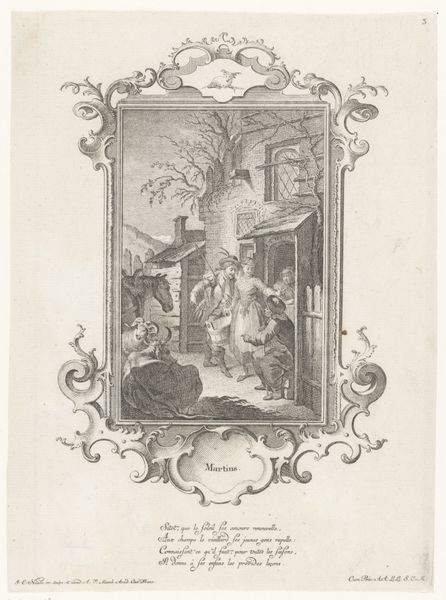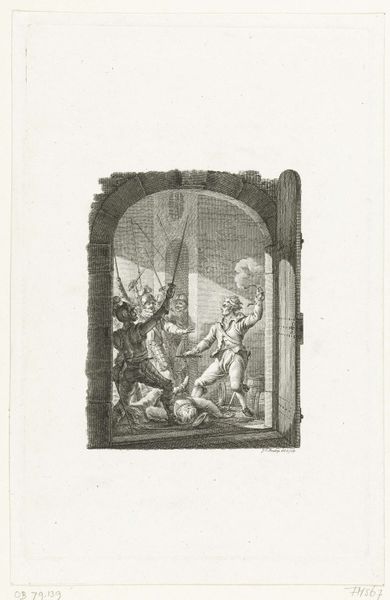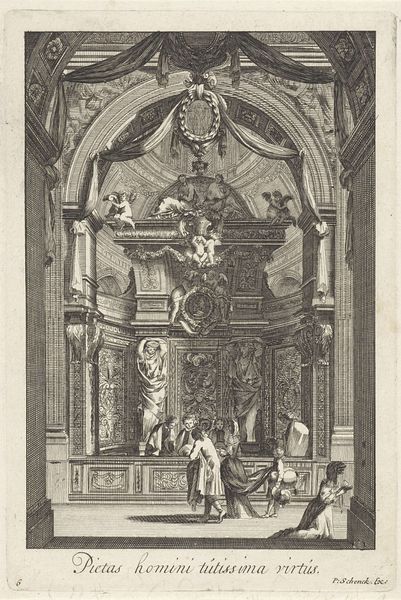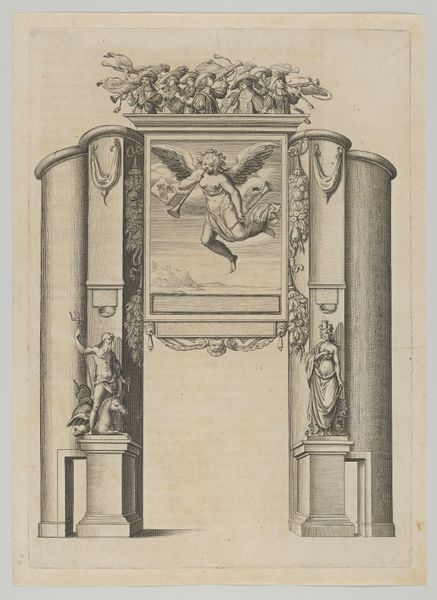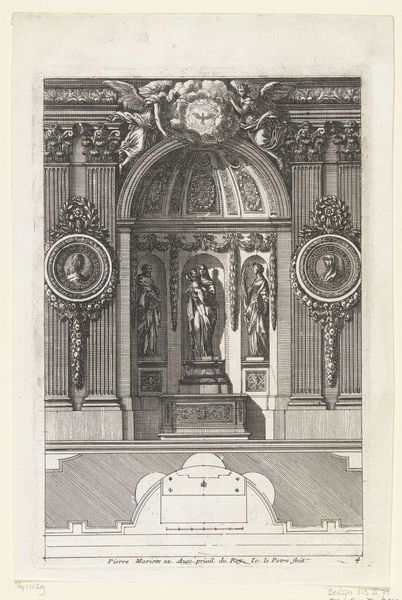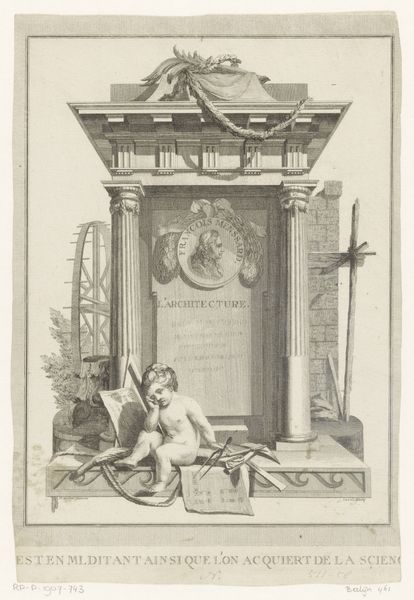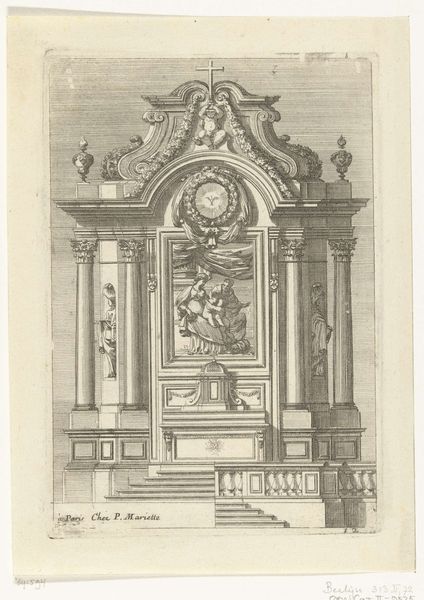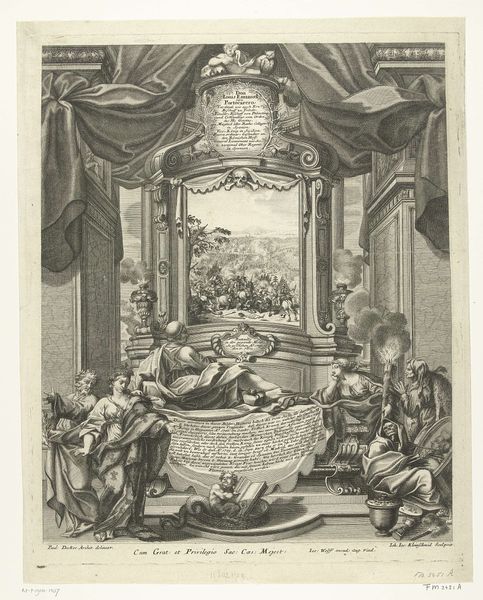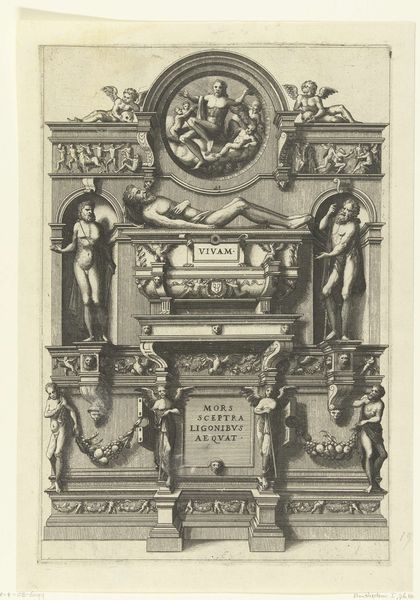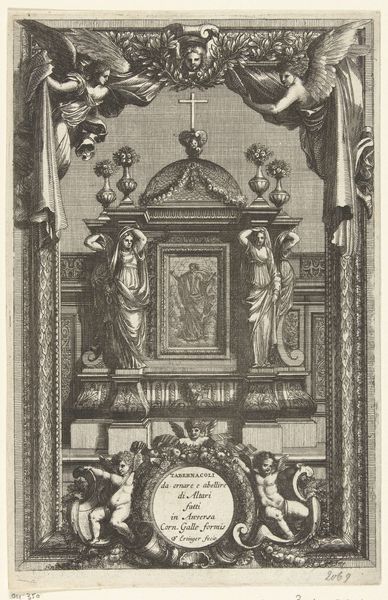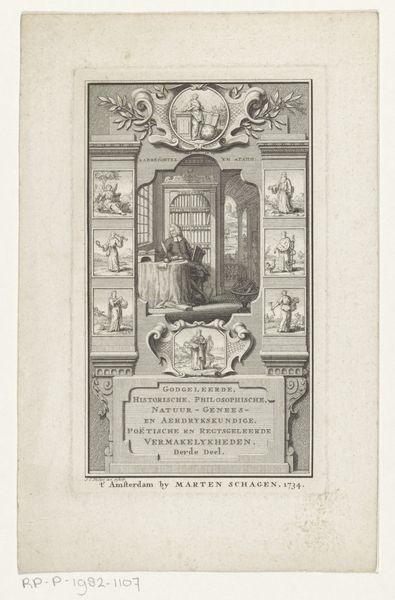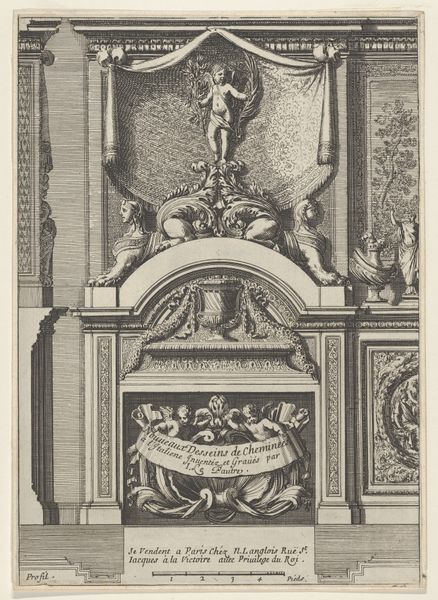
print, engraving
#
allegory
# print
#
caricature
#
history-painting
#
engraving
#
rococo
Dimensions: height 161 mm, width 102 mm
Copyright: Rijks Museum: Open Domain
Editor: The detail in this engraving is stunning! There's a definite chill to it, though; the palette is limited, as one expects with prints, yet the overall effect is stark. Curator: Indeed. This is "Stedenmaagd van Culemborg in kasteelvertrek," an allegorical engraving made between 1752 and 1753 by Caspar Jacobsz. Philips. It's currently held here at the Rijksmuseum. Let’s consider how the specific process of engraving—the precise carving of lines into a metal plate, and the inking and pressure needed to transfer that image onto paper—lends itself to a reading about power, both literally and figuratively. Editor: I agree. Look at the sharp contrast between the black lines and the white space, how they define the form and give such authority to the composition. Even the putti seem overworked! It makes you think about the skill and time invested, and what this labor means. Curator: Precisely! It depicts the Stedenmaagd, or City Virgin, representing the city of Culemborg. She sits enthroned within a castle chamber, holding a shield bearing the city's coat of arms. Through the window we see the tower of Culemborg castle. To me, the historical context is paramount here. We must remember the Dutch Republic was very much a product of conflict with Spain, and depictions of regional or city identities became important assertions of localized control, particularly in prints such as this that were widely circulated. How can we not view gender and civic power when contemplating this work? Editor: You're right, seeing her in that context does change the piece. Now I can better read into this the allegorical representation of power, privilege, and civic pride, deeply interwoven with specific processes and materials. Even that elaborate rococo frame contributes to its messaging about status. It must have functioned as an assertive historical document, too, that perhaps acted to legitimize structures and civic policies. Curator: Exactly! And perhaps, a re-thinking of that function gives this work, as a document, some new value to today's conversations surrounding class and identity in The Netherlands. Editor: That's quite the angle. I guess examining process really leads back into considering this from so many different points of view, historically or not.
Comments
No comments
Be the first to comment and join the conversation on the ultimate creative platform.
